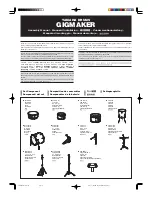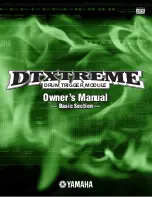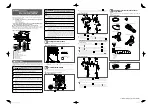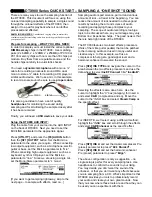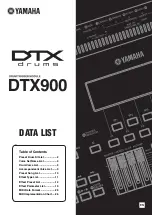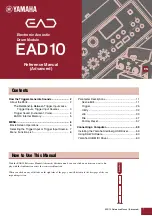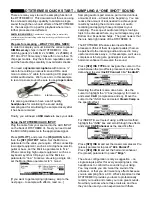
6
Splitter Setting
The splitter segregates the magnetic from the
nonmagnetic product. Its best position balances the
maximum removal of magnetic products with minimal
misplacement of non-magnetics for a given feed
rate and drum rotation speed. Both increased drum
speed and increased feed rate will move the main
non-magnetic flow away from the drum. Drum speed
has a much greater effect on splitter position than
feed rate does.
The splitter may be observed from the side port in the
housing of the drum. Typically, the splitter is adjusted
to be close to the main non-magnetic flow, allowing all
deflected particles to report to the magnetic fraction.
This could include non-magnetic particles that have
magnetic particles embedded or locked to them.
For some materials there may be a clear visible color
difference between the flows. For other materials the
difference may only be seen in the assays.
When concentrating magnetic ores or materials,
the splitter will be located along the centerline of the
drum shaft or a few inches behind. The drum speed
is typically higher which forces the discharge of the
magnetic product near the back of the drum housing.
The splitter tip may be adjusted up or down when
there is no feed. It would be accessed from the lower
front panel of the drum housing. Normally, this would
not be adjusted. It would be lowered to accommodate
large chunks of magnetic or to clear the drum if the
splitter is canted back into the drum to limit misplaced
non-magnetic material. It would be adjusted up or
down to obtain the best placement for the chosen
magnet rotation discussed below. (See Figures 2-4).
Figure 2 ‑ Multiple Splitters
Figure 3 ‑ One Splitter/Clean Non‑Mag
Figure 4 ‑ One Splitter
Clean Magnetic Concentrate
Mag
discharge
Mag
discharge
Non-mag
discharge
Middling
Inspection
door
Magnetic
discharge
Non-magnetic
discharge
Magnetic
discharge
Non-magnetic
discharge
Inspection
door









